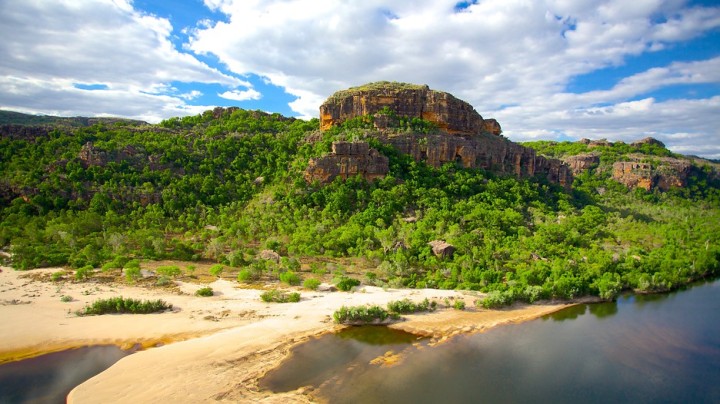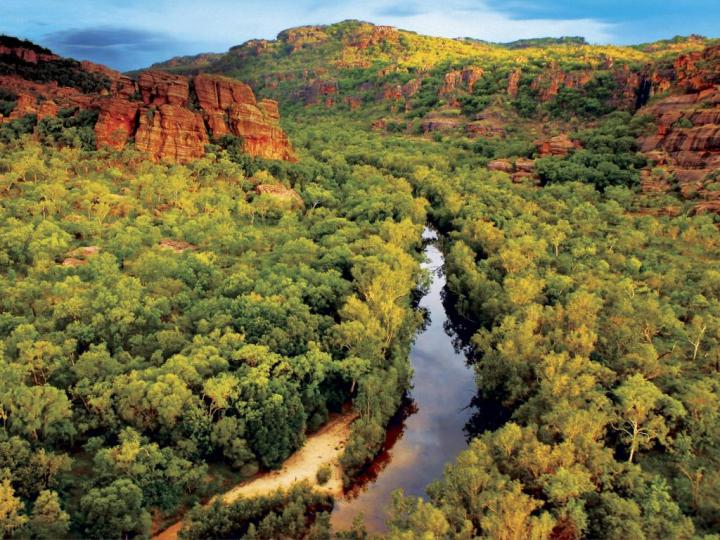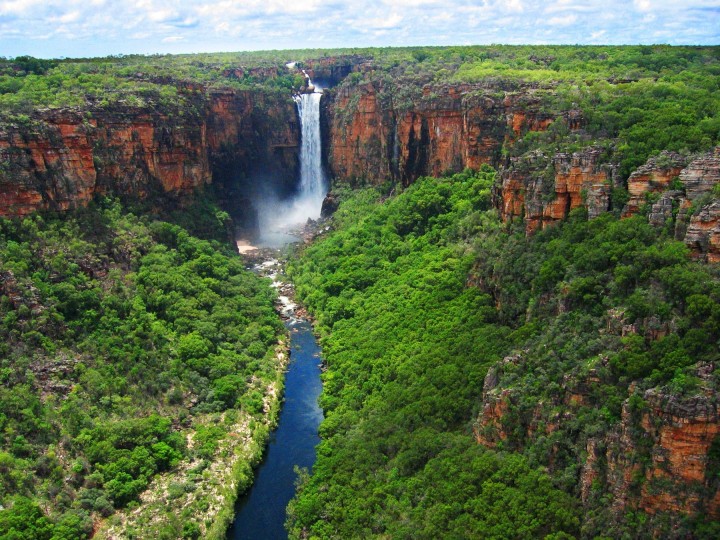
Kakadu lies 150 miles east of Darwin, in a region Australians fondly call The Top End. While Canberra might be the seat of the nation’s power, Kakadu is one of those few places where you’ll discover the country’s soul.
World Heritage-listed Kakadu is a geological, biological, and cultural wonderland. It’s more than just a national park, it’s a national treasure.
The Bininj and Mungguy people have been caring for this country for over 50,000 years, and today, are happy to share parts of their Country, knowledge and Dreaming, with you. A three hour drive from Darwin, Kakadu is open year round, but most visitors come during the Dry Season, from May to October, when most of the park’s roads are open.

Just because this is the Outback, don’t think you have to rough it. There’s comfortable hotels and campsites, and visitors centers where you can stock up on supplies, fuel and information.
You’ll need to set aside a few days to fully explore Kakadu, and once there, the best way to experience the park is by off-road vehicle and on foot. The park has around 25 marked trails, from short walks to multi-day hikes.
The walk to Jim Jim Falls is only half a mile, but it’s a walk that you’ll never forget. Clamber through a lost world of hidden canyons, past waters that mirror the sky, before arriving at an ancient plunge pool surrounded by perfect beaches and 500-foot cliffs.
Six miles away is Twin Falls. Here, at the end of a forested gorge, is the sort of place many dream about, but few will ever see.

Another great place to cool off is Gunlom Falls. From the campground, hike to the top of the falls for views all the way to far-off Arnhem Land, then take your pick from a series of crystal-clear pools shaded by eucalypts.
Kakadu is dotted with thousands of art sites, with some ancient galleries featuring paintings dating back over 20,000 years. Created using local ochres, and sometimes even blood, these artworks give an insight into the lives of Aboriginal peoples throughout the centuries. Nourlangie Rock was the wet-season home to generations of Aboriginal people.

Here you’ll come face-to-face with Namarrgon, The Lightning Man, who, every wet season, splits open the clouds with his axe, bringing thunder and new life to the country below.
A couple of hours’ drive to the north are the galleries of Ubirr. See paintings of the Rainbow Serpent, the wildlife of the wetlands below, and above, in impossibly high places, paintings said to be created by mimi spirits.
At the end of the day, climb up to the outlook and wait, as Mother Nature paints her own masterpiece across the sky.

Another great way to explore Kakadu is by boat. Take a cruise through the park’s richest wetlands, the Yellow Water Billabong. Drift across lotus-covered flood plains, past Jabiru and Magpie Geese, and say G’day to the park’s most famous residents, the salt- and freshwater crocodiles.
But to really appreciate the incredible scale and majesty of Kakadu, take to the air. A chartered flight will have you soaring over the East Alligator River, Dinosaur Valley, The Magela Wetlands,
places untouched by the hands of time.
So, if you’re dreaming of adventure, don’t just dream – do it. Come and share the spirit of Kakadu, it’s been waiting here since the dawn of time, just for you.
